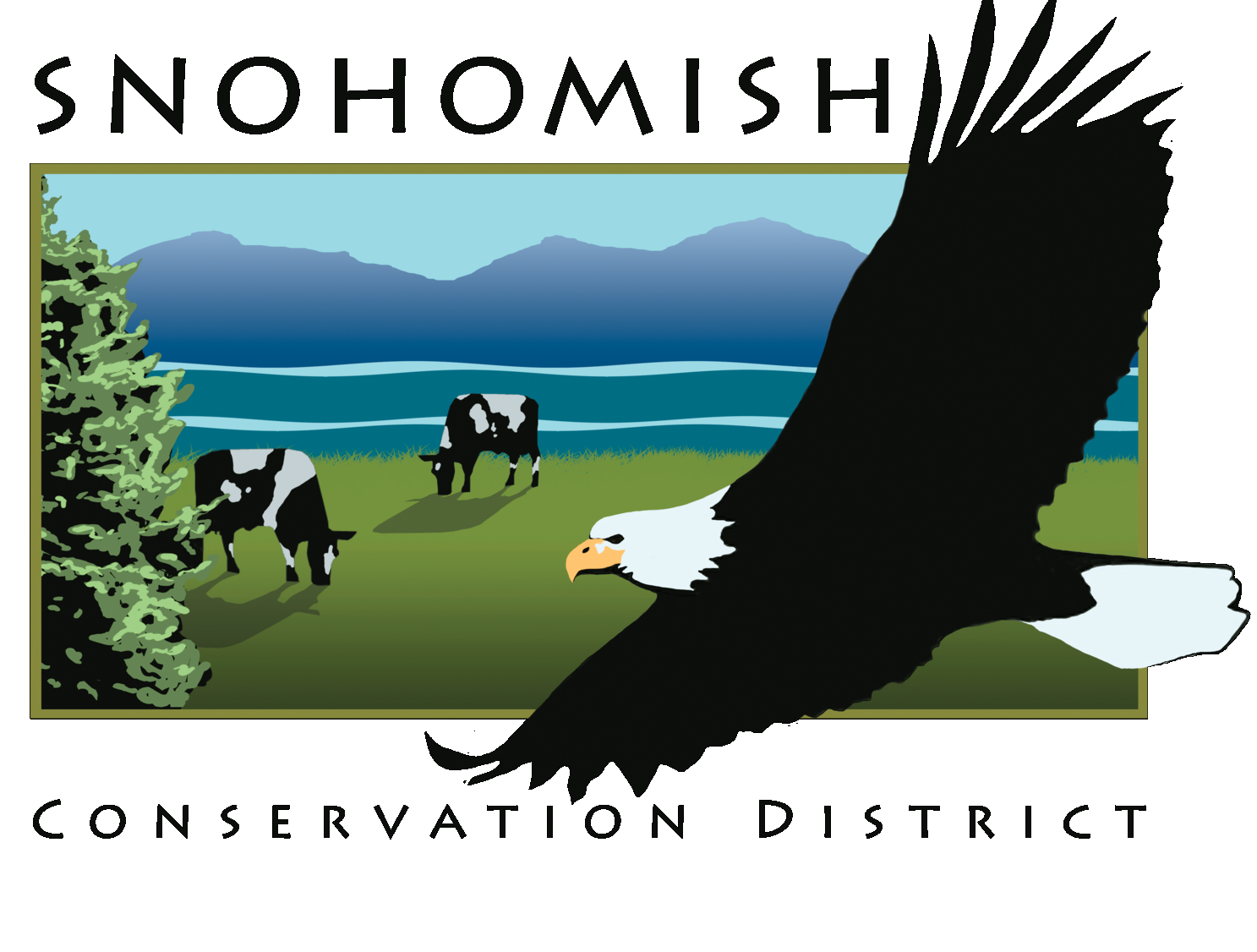A Decade of Partnership with Washington Conservation Corps
/WCC crew members monitor a restoration site. Protective cones are placed around young trees to keep them safe from hungry critters.
Waterproof waders. Neoprene boots. White and yellow hard hats. Sturdy gloves. These are some of the items you might see our Washington Conservation Corps members wearing as they support the District’s restoration programs.
Washington Conservation Corps (WCC) is an AmeriCorps program that provides young adults and military veterans with hands-on field experience and training as they embark on environmental careers. Last year, WCC members serving on a field crew or as an Individual Placement (IP) supported Snohomish Conservation District and over 100 other partner organizations throughout Washington state.
Snohomish Conservation District celebrated 10 years of partnership with WCC in 2024. Over the course of this partnership, 60 WCC crew members have supported more than 58 District projects spanning nearly 300 acres of riparian zones and other habitat. They planted nearly 270,000 native plants, removed countless invasive plants, constructed and maintained beaver coexistence installations, managed our native plant nursery, constructed rain gardens, installed livestock exclusion fencing, and built and maintained backcountry trails and campsites. They also helped respond to natural and other disasters like the Oso (SR530) slide and Covid pandemic.
Since 2016, the District has also hosted one IP member per year to assist the crew and serve alongside District staff on a variety of projects. Our IPs support our Annual Plant Sale, assist with technical assistance to landowners, help plan and monitor riparian restoration projects, and develop educational and outreach materials for the community.
This year’s IP Paisley Blume shared, “My time with the Snohomish Conservation District as a WCC IP has been an incredible opportunity to gain hands-on experience, from implementing an afforestation project to assisting in managing our nursery facility, and even participating in a salmon spawning ground survey.”
The District’s WCC crews and IPs consistently perform high quality work, and in return, we strive to create intentional learning opportunities for them. WCC members shadow District staff with a variety of technical expertise and are given ample educational opportunities. They receive training in plant and wildlife identification, gain their WSDA pesticide applicators license, and receive introductions to topics such as watershed processes, beaver coexistence, process-based restoration, forestry, and agroforestry.
WCC crew members assemble a beaver exclusion fence on land before wading into the pond.
“The support and mentorship I’ve received have helped me build valuable skills, connect with inspiring professionals, and collaborate across teams within the District. I’m grateful for this experience, which is helping me grow toward my career goals while also allowing me to make a meaningful impact through conservation and restoration efforts,” said Paisley.
As a result of the connections and network built while serving with WCC, many crew and IP members secure new positions after their term. The District alone has hired 10 WCC members as full-time staff, and we’ve seen firsthand that there is no teacher like the boots on the ground experience gained through their work with WCC.
Our partnership with WCC for the past 10 years has been integral to the successful implementation of many habitat restoration projects. The District is thankful to WCC for providing educational and professional opportunities to their members, and equally grateful for our members’ contributions to our restoration efforts and other projects. We look forward to continuing our partnership with WCC for many years to come.

